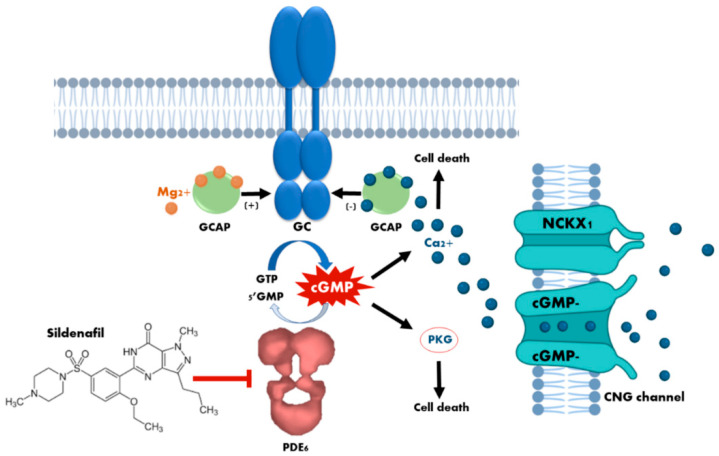Figure 1.
Cytotoxicity mechanisms of cyclic guanosine monophosphate (cGMP) in photoreceptors. The loss of phosphodiesterase (PDE6) function, or the prolonged activation of retinal guanylyl cyclase (GC) due to dominant mutations in the guanylyl cyclase-activating proteins (GCAPs), leads to an increase in the concentration of cytosolic cGMP which, in turn, causes continuous stimulation of the of protein kinase G (PKG) and an excessive influx of Ca2+ through the sustained opening of cyclic nucleotide-gated (CNG) channels. Both events have been demonstrated to cause photoreceptor cell death. The curved blue arrow represents cGMP synthesis by GC enzyme, whereas the curved white arrow represents cGMP hydrolisis by PDE6 enzyme. The blunt-end arrow represents the inhibition of PDE6 by sildenafil.

